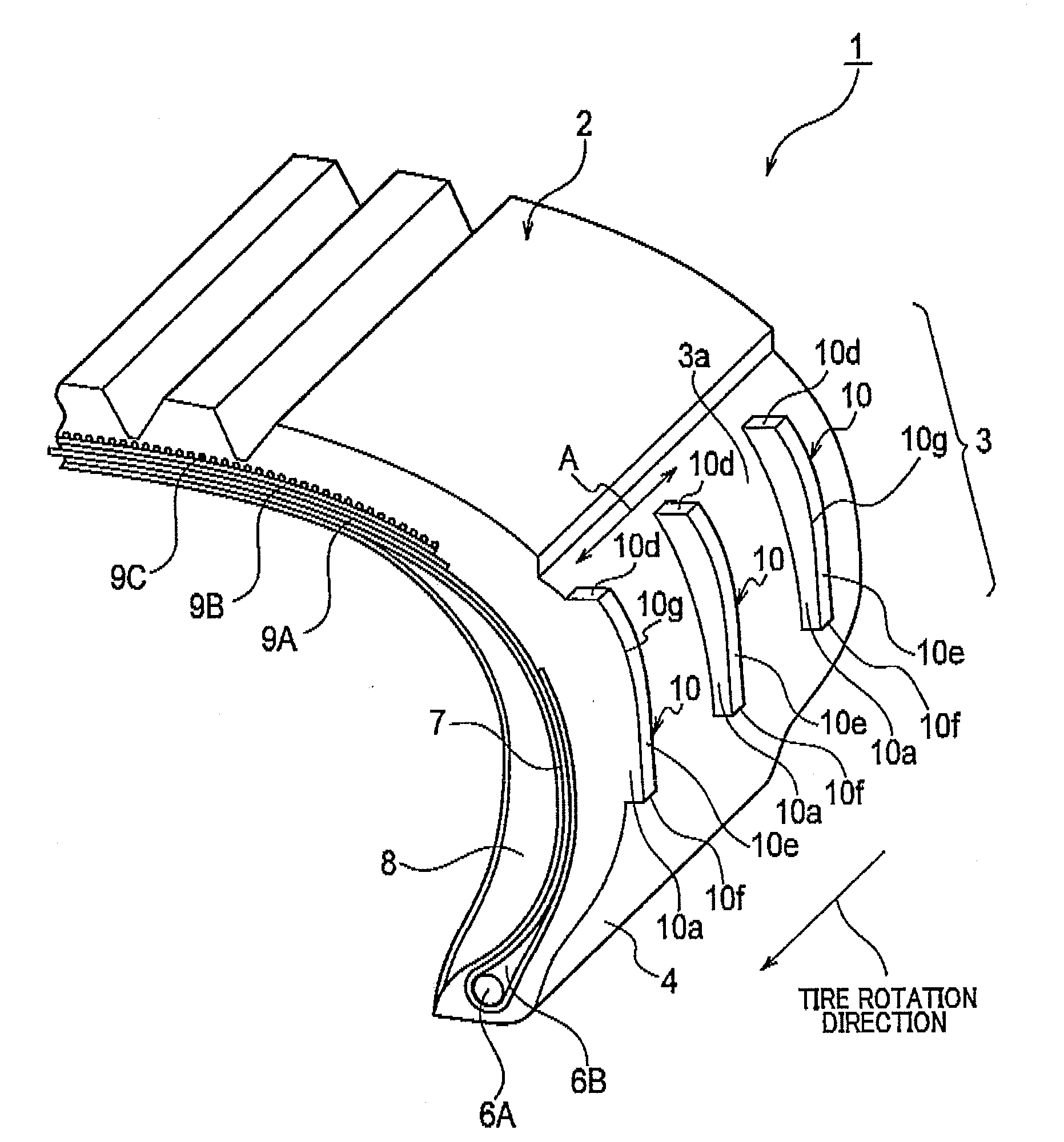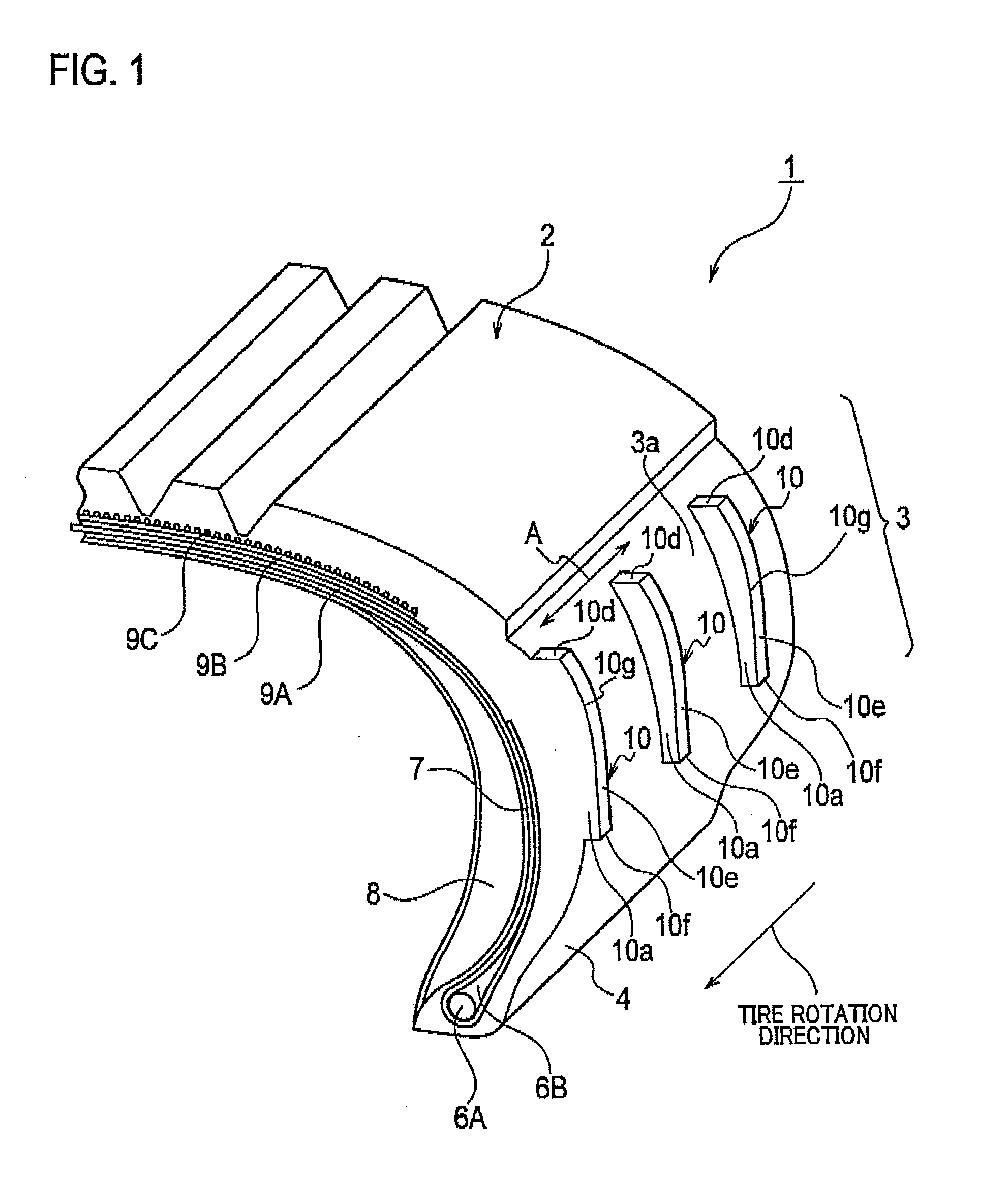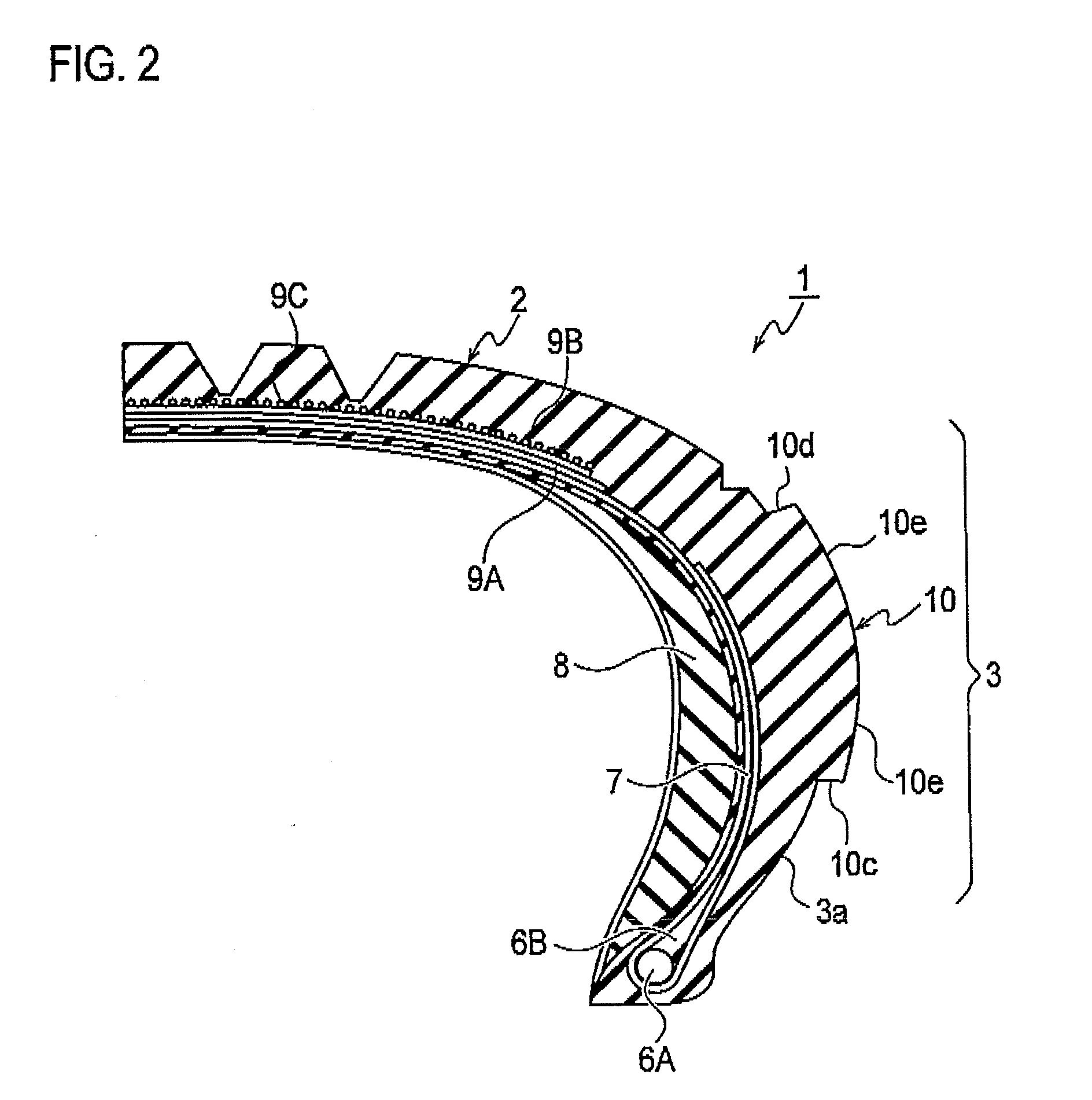Pneumatic tire
a pneumatic tire and tire technology, applied in the field of pneumatic tires, can solve the problems of increasing the temperature of the tire in the pneumatic tire, the sidewall reinforcing layer reaching a very high temperature, and the tread portion breaking, so as to facilitate the separation of airflow and accelerate the heat exchange
- Summary
- Abstract
- Description
- Claims
- Application Information
AI Technical Summary
Benefits of technology
Problems solved by technology
Method used
Image
Examples
first embodiment
[0071]Next, one example of the pneumatic tire according to the present invention will be described with reference to the drawings. Note that, in the following description of the drawings, the same or similar parts will be denoted by the same or similar reference numerals. However, it should be noted that, since the drawings are schematic, dimensional proportions and the like are different from actual ones. Accordingly, specific dimensions and the like should be judged in consideration of the following description. Additionally, it goes without saying that there are some parts having dimensional relationships and dimensional proportions different from one drawing to another.
(Configuration of Pneumatic Tire)
[0072]Firstly, configurations of a pneumatic tire according to a first embodiment will be described with reference to FIGS. 1 and 2. FIG. 1 is an exploded perspective view showing a part of the pneumatic tire according to the first embodiment; FIG. 2, a tread-width direction cross-...
modification example 1
[0110]Firstly, each turbulent-flow generating projection according to a modification example 1 will be described with reference to FIG. 7. FIG. 7 is a side view showing a cross-section of the turbulent-flow generating projection 10A according to the modification example 1.
[0111]As shown in FIG. 7, a projection-width cross-sectional shape of the turbulent-flow generating projection 10A is left-right symmetric. The projection-width cross-sectional shape of this turbulent-flow generating projection 10A is trapezoidal. Additionally, the front wall angle θ1 and the rear wall angle θ2 are both set to an angle exceeding 90°.
[0112]In a condition that the projection-width cross-sectional shape of the turbulent-flow generating projection 10A is thus trapezoidal, generation of cracks attributable to degradation of angled portions can be prevented as much as possible since angled portions having an angle exceeding 90° are eliminated from the turbulent-flow generating projection 10A, Additionall...
modification example 2
[0113]Next, each, turbulent-flow generating projection according to a modification example 2 will be described with reference to FIG. 8. FIG. 8 is a side view showing a cross-section of the turbulent-flow generating projection 10B according to the modification example 2.
[0114]As shown in FIG. 8, a projection-width cross-sectional shape of the turbulent-flow generating projection 10B is left-right symmetric. The projection-width cross-sectional shape of this turbulent-flow generating projection 10B is triangular. In other words, the front wall angle θ1 and the rear wall angle θ2 are both set to an angle exceeding 90°.
[0115]Specifically, the turbulent-flow generating projection 10B is constituted of the front wall face 10a, the rear wall face 10b, the inner side face 10c and the outer side face 10d, and does not include the upper face 10e. That is, the edge portion 10g is formed between the front wall face 10a and the rear wall face 10b of the turbulent-flow generating projection 10B....
PUM
 Login to View More
Login to View More Abstract
Description
Claims
Application Information
 Login to View More
Login to View More - R&D
- Intellectual Property
- Life Sciences
- Materials
- Tech Scout
- Unparalleled Data Quality
- Higher Quality Content
- 60% Fewer Hallucinations
Browse by: Latest US Patents, China's latest patents, Technical Efficacy Thesaurus, Application Domain, Technology Topic, Popular Technical Reports.
© 2025 PatSnap. All rights reserved.Legal|Privacy policy|Modern Slavery Act Transparency Statement|Sitemap|About US| Contact US: help@patsnap.com



